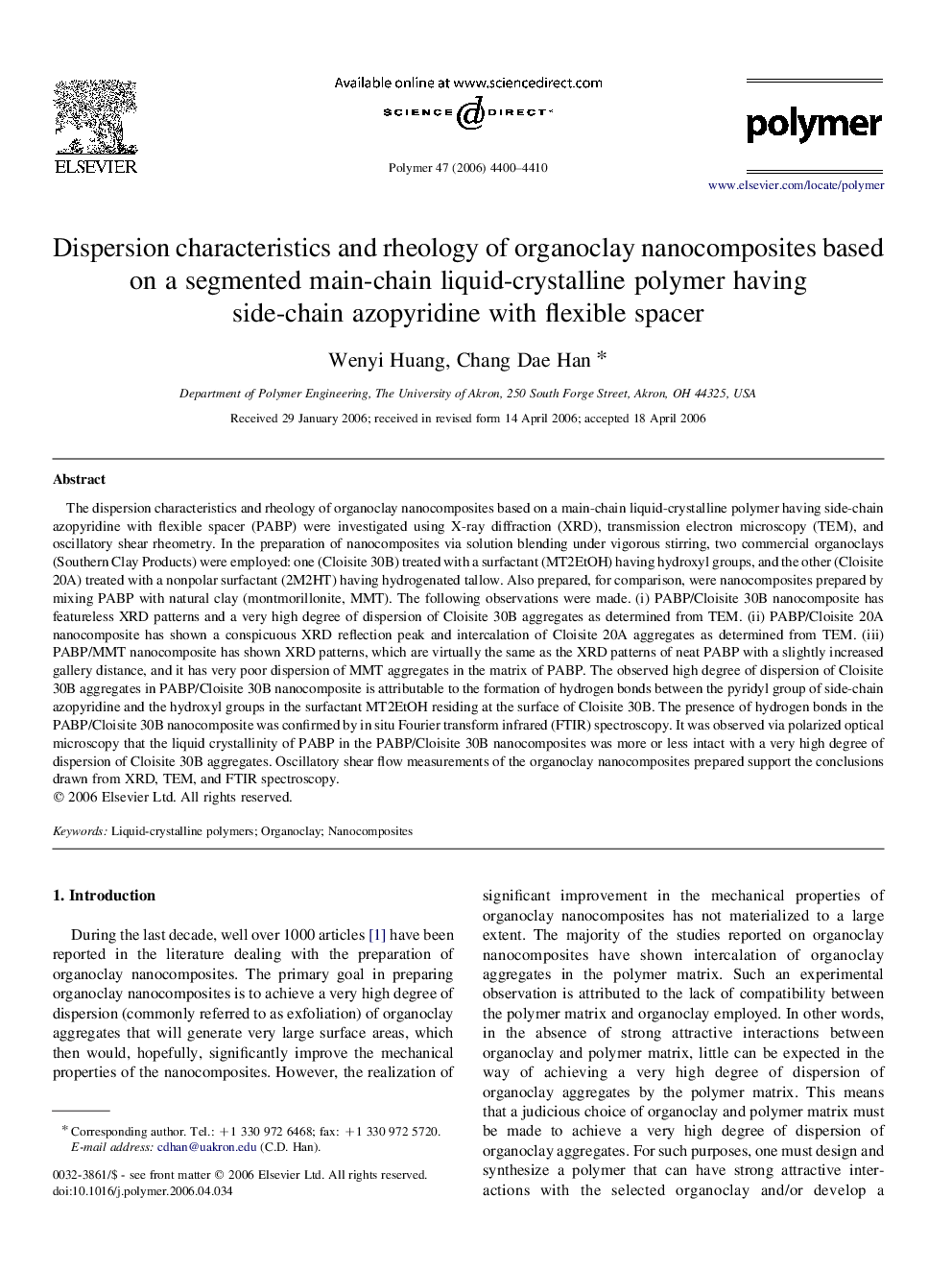| Article ID | Journal | Published Year | Pages | File Type |
|---|---|---|---|---|
| 5189751 | Polymer | 2006 | 11 Pages |
Abstract
The dispersion characteristics and rheology of organoclay nanocomposites based on a main-chain liquid-crystalline polymer having side-chain azopyridine with flexible spacer (PABP) were investigated using X-ray diffraction (XRD), transmission electron microscopy (TEM), and oscillatory shear rheometry. In the preparation of nanocomposites via solution blending under vigorous stirring, two commercial organoclays (Southern Clay Products) were employed: one (Cloisite 30B) treated with a surfactant (MT2EtOH) having hydroxyl groups, and the other (Cloisite 20A) treated with a nonpolar surfactant (2M2HT) having hydrogenated tallow. Also prepared, for comparison, were nanocomposites prepared by mixing PABP with natural clay (montmorillonite, MMT). The following observations were made. (i) PABP/Cloisite 30B nanocomposite has featureless XRD patterns and a very high degree of dispersion of Cloisite 30B aggregates as determined from TEM. (ii) PABP/Cloisite 20A nanocomposite has shown a conspicuous XRD reflection peak and intercalation of Cloisite 20A aggregates as determined from TEM. (iii) PABP/MMT nanocomposite has shown XRD patterns, which are virtually the same as the XRD patterns of neat PABP with a slightly increased gallery distance, and it has very poor dispersion of MMT aggregates in the matrix of PABP. The observed high degree of dispersion of Cloisite 30B aggregates in PABP/Cloisite 30B nanocomposite is attributable to the formation of hydrogen bonds between the pyridyl group of side-chain azopyridine and the hydroxyl groups in the surfactant MT2EtOH residing at the surface of Cloisite 30B. The presence of hydrogen bonds in the PABP/Cloisite 30B nanocomposite was confirmed by in situ Fourier transform infrared (FTIR) spectroscopy. It was observed via polarized optical microscopy that the liquid crystallinity of PABP in the PABP/Cloisite 30B nanocomposites was more or less intact with a very high degree of dispersion of Cloisite 30B aggregates. Oscillatory shear flow measurements of the organoclay nanocomposites prepared support the conclusions drawn from XRD, TEM, and FTIR spectroscopy.
Related Topics
Physical Sciences and Engineering
Chemistry
Organic Chemistry
Authors
Wenyi Huang, Chang Dae Han,
